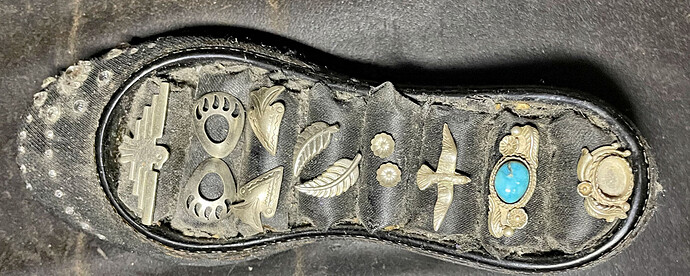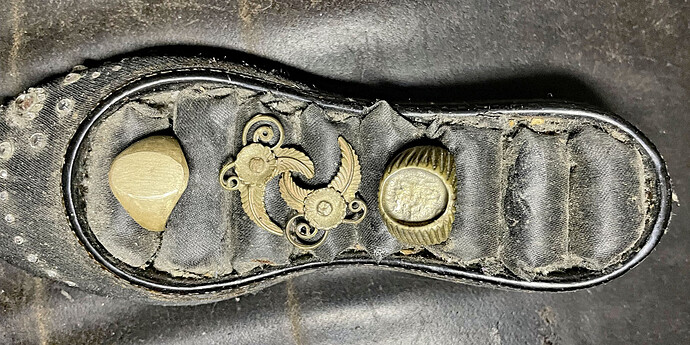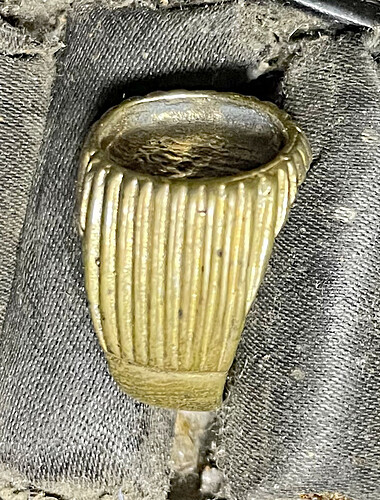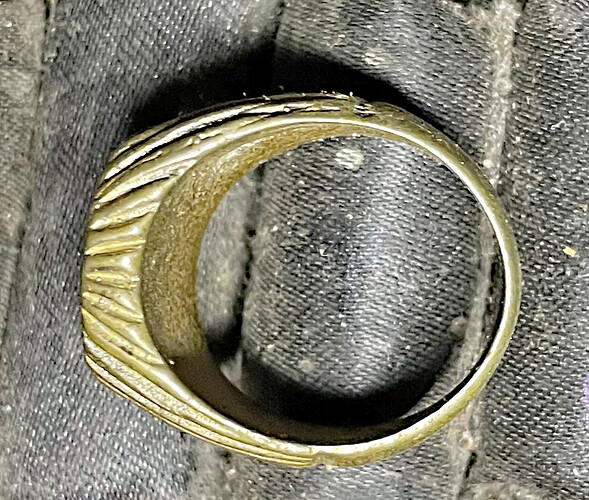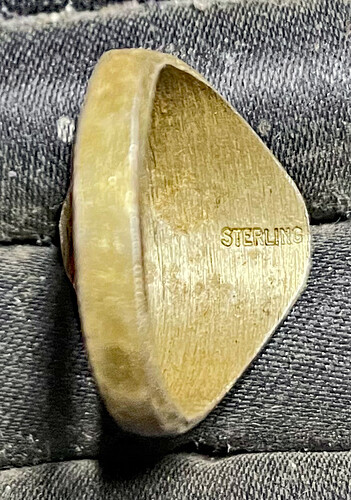Not really a repair question. More of a wanting to learn one.
Could someone share their expertise?
These are mid 1980’s jewelry findings that were purchased at Thunderbird Supply in Gallup.
Most were still in labeled zipper bags, stating the item# and metal. Some said Sterling, some Nickel silver.
I was not that careful storing them, so some tarnished. They were in a small, hinged tackle box. Some of the unpackaged ones were touching each other.
Here is a small sample of the pieces.
Most of these were in packages marked Sterling. They did not tarnish that much. Even the ones that were loose.
Combo of stamped and cast.
These were loose and tarnished. I think the leaves/flowers and the ring on right are Nickel Silver, but am not sure.
The ring on the left is marked Sterling and appears to be that.
I have never seen Sterling tarnish like that. Could some of the tarnish on it be from the Nickel Silver pieces?
Photos of the ring I think is NS. I love the design of it. Just need to find the perfect cabochon to put in it.
Also, is it possible to mix Nickel and Sterling Silver when making jewelry? I would love to use some of the leaf/flower pieces on a bracelet that mostly has Sterling findings/settings.
I have soldered both types before, but never together. The bracelet if for me. Has a Sterling, sand cast base.
Many thank yous to anyone who can help.
2 Likes
Have had some sterling items in bags since the 90’s which show little to no black tarnish and some yellowing, which I assume is from the copper content. Makes sense that manufacturers would have dipped them in an anti tarnish solution like a borax bath before bagging them to keep them looking “fresh”.
You can mix nickel and silver in the same piece (be sure to quality stamp for both metals on the pieces you’re making). I’d stick with generous proportions of Handy Flux, a super easy solder (#56), and prep your nickel by lighly sanding the contact surfaces which you will solder to your sterling, and using a liquid paper type correction fluid as anti flux on the findings surfaces you don’t want to pick up solder.
After soldering, while your pieces are still hot, you’ll want to pre-quench them in a 100% water bath, and let them sit in an ultrasonic for about 5 minutes. This will strip off your correction fluid anti-flux before you pickle the pieces in your little crock pot full of acid based pickle set to low heat.
Word to the wise, if you simply put the freshly soldered pieces into your hot pickle without first removing the anti flux (water quench + ultrasonic), your pickle will quickly become so cloudy you won’t be able to see your pieces in the bottom of the pickle pot.
6 Likes
Thank you so much. I have never used correction fluid before. Sounds like a great thing.
I was apprehensive about using pickle. Would silver pickle or nickel pickle be best if most of the piece is silver?
1 Like
I’d keep it simple and just use Sparex. However, there are different opinions on this. Here’s a thread I found that discusses precisely this question.
2 Likes
Just my 2 cents worth here: Not knowing the true metal composition you could also try the aluminum foil/salt/baking soda (typically for silver) or Wrights copper cream. It’s possible T-bird supply might have an old timer around that knows the mix they used in the 80s.
I still have sterling from IJS in the 80s stored in a plastic bag. Sterling stock and findings have very little patina.
2 Likes
